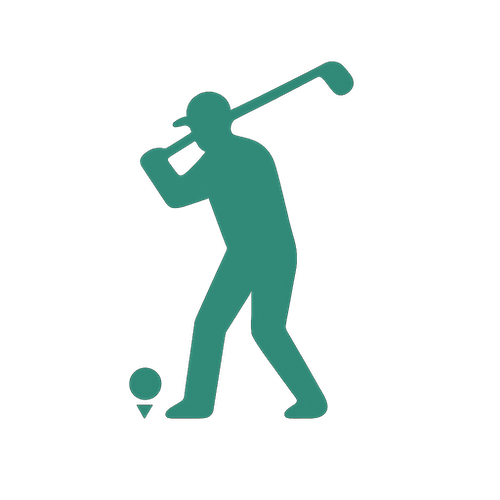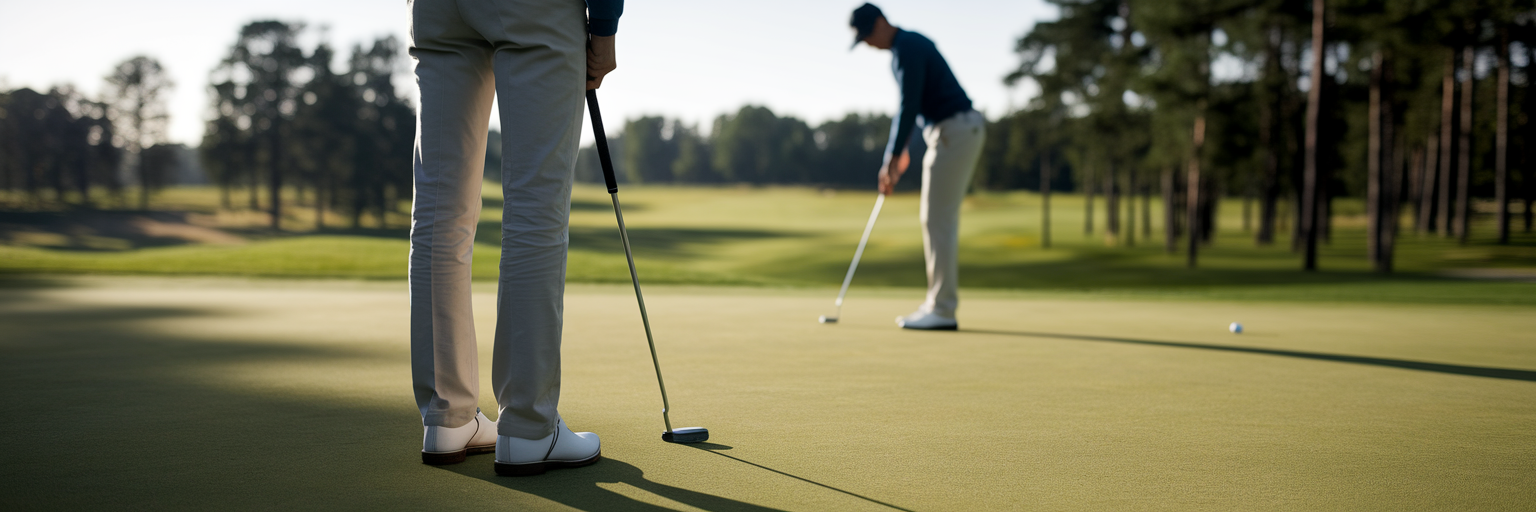Your First Steps to Mastering Golf Basics
Starting Your Golf Journey with Confidence
Many newcomers feel that golf is a complex and intimidating sport. We see it differently. Golf is a wonderful, lifelong activity that blends physical skill with time spent in nature and connecting with others. It’s a journey of personal progress, not a test you have to pass on your first day.
This guide will walk you through the fundamentals in a simple, step-by-step way. We will cover everything from essential terms and equipment to the basic rules and the core of the golf swing. Remember, the goal here is enjoyment and steady improvement, not immediate perfection. Understanding these basics is the first step to building confidence and discovering the rewards of learning how to play golf.
Decoding the Language of the Links
Walking onto a golf course for the first time can feel like visiting a new country where you don't speak the language. Let's clear up some of the most common terms so you can feel comfortable from your very first round. The most important concept is 'par', which is simply the expected number of strokes a skilled golfer would take to complete a hole.
Your score on each hole is described in relation to par. This table offers a quick reference for the most common scoring terms, providing some helpful beginner golf tips.
| Term | Definition | Relation to Par |
|---|---|---|
| Par | The expected number of strokes for a hole | Even |
| Birdie | One stroke under par | -1 |
| Bogey | One stroke over par | +1 |
| Double Bogey | Two strokes over par | +2 |
| Eagle | Two strokes under par | -2 |
You will also hear about different areas of the course:
- Tee Box: This is the designated starting area where you take your first shot on each hole.
- Fairway: The short, manicured grass that forms the ideal path from the tee box to the green.
- Green: The very short, smooth grass surrounding the hole where you use a putter.
- Rough: The longer grass that borders the fairway, making your next shot more challenging.
- Bunkers: These are sand-filled pits, often placed strategically to test your skill.
Selecting Your Essential First Golf Clubs
When you look inside a seasoned golfer’s bag, you will see up to 14 clubs. As a beginner, you absolutely do not need that many. In fact, learning is much more effective with fewer clubs, as it allows you to master the fundamentals without feeling overwhelmed. Deciding what golf clubs to start with is about simplicity and function, not quantity.
Your Starter Club Set
A small, manageable set is all you need to get going. We recommend starting with these four essential clubs:
- Driver: This is the longest club, used for your first shot on long holes to hit the ball the farthest distance from the tee box.
- A Mid-Iron (like a 7-iron): A versatile club used for shots from the fairway, typically for distances between 130-170 yards.
- A Wedge (like a Pitching or Sand Wedge): Used for short, high shots onto the green or for getting out of sand bunkers.
- Putter: The club you will use on the green to gently roll the ball into the hole.
Other Important Gear
Beyond clubs, two other items are crucial. First, get some durable, two-piece golf balls. They are designed for distance and can withstand the occasional mis-hit. Second, a golf glove is a great investment. Worn on your non-dominant hand, it improves your grip on the club and helps prevent blisters.
Core Rules and On-Course Etiquette
Knowing a few key rules and customs will help you feel confident and respectful on the course. Golf is built on a foundation of integrity and consideration for others, and following these guidelines shows you understand and appreciate the game's traditions.
Fundamental Rules for Beginners
While the official rulebook is extensive, you only need to know a couple of principles to start. The most basic golf rules for beginners are about fairness. First, you are only allowed to carry a maximum of 14 clubs in your bag during a round. Second, the core principle of golf is to play the ball as it lies. This means you should not move or touch your ball to improve its position before your shot. For a complete understanding of the game's regulations, the official Rules of Golf hub from the USGA is an invaluable resource.
Essential On-Course Etiquette
Good golf course etiquette for new players is mostly common sense and respect. It ensures everyone has an enjoyable experience.
- Maintain a good pace: Be ready to hit when it is your turn and walk briskly between shots to avoid holding up the group behind you.
- Be quiet and still: When another player is swinging, stand still and remain silent to avoid distracting them.
- Care for the course: If you hit from a sand bunker, rake it smooth when you are done. If your ball makes a small dent on the green, repair it with a tee or divot tool.
Building a Simple and Repeatable Swing
The golf swing can seem complicated, but at its heart, it is a simple athletic motion. Forget trying to be perfect. Instead, focus on creating a simple golf swing for beginners that you can repeat consistently. We can break it down into three manageable parts: the grip, the stance, and the motion itself.
The Grip: Your Connection to the Club
Your grip is your only connection to the club, so it is incredibly important. The key is to hold it with the right amount of pressure. Imagine you are holding a small bird; you want to hold it firmly enough so it cannot fly away, but not so tightly that you would harm it. There are a few common styles, like the interlock or overlap grip. Experiment to see which feels most natural and comfortable for you.
The Stance: Your Foundation for Balance
A good swing starts with a solid foundation. Your stance should be athletic and balanced. Stand with your feet about shoulder-width apart for stability. Bend forward from your hips, keeping your back relatively straight, and flex your knees slightly. This posture allows your body to rotate freely and powerfully through the swing.
The Swing Motion: A Rhythmic Turn
The best way to think about the swing is as a smooth, rhythmic rotation. It is not about hitting the ball with your arms. Instead, it is a sequence: turn your body away from the target on the backswing, then turn your body through towards the target on the downswing. Your arms and the club should feel like they are just along for the ride. Focus on a smooth tempo rather than raw power.
Your First Practice Session Plan
Now it is time to put it all together. Your first trip to the driving range should be about exploration, not results. The goal is to get a feel for making contact with the ball and building a rhythm. Don't worry about where every shot goes. Bad shots are a normal and necessary part of learning.
Here is a simple plan for your first practice session:
- Warm up: Start with some light stretches for your back, shoulders, and legs to prepare your body for the motion.
- Start small: Begin with your wedge, making short, easy half-swings. Just focus on the feeling of the club hitting the ball.
- Move to the iron: Once you feel comfortable, switch to your 7-iron and start making a fuller swing, focusing on the rhythmic turn we discussed.
- Finish with the driver: The driver can be the most difficult club to hit. Take a few swings with it, but do not get discouraged if it feels challenging.
Mastering these fundamentals is the first and most important step in your journey. By focusing on these basics, you are building a solid foundation for a lifetime of enjoyment on the course. Now you have a plan, so get out there and start your adventure in learning how to play golf.










